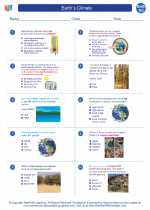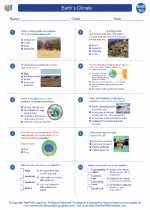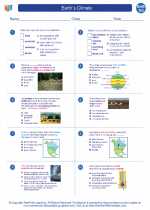Velocity
Velocity is a vector quantity that describes the rate at which an object changes its position. It is defined as the displacement of an object per unit time and is typically measured in meters per second (m/s) or kilometers per hour (km/h).
Calculating Velocity
The formula for calculating velocity is:
center;">\[Velocity = \frac{Displacement}{Time}\]
Where:
- Velocity is the rate of change of displacement
- Displacement is the change in position of the object
- Time is the duration over which the displacement occurs
Types of Velocity
There are different types of velocity, including:
- Instantaneous Velocity: The velocity of an object at a specific instant in time.
- Average Velocity: The total displacement of an object divided by the total time taken.
- Uniform Velocity: When an object covers equal distances in equal intervals of time.
- Non-Uniform Velocity: When an object covers unequal distances in equal intervals of time.
Units of Velocity
Velocity is typically measured in units of distance divided by units of time. Common units of velocity include:
Graphical Representation of Velocity
Velocity can be represented graphically by plotting displacement versus time. The slope of the displacement-time graph gives the velocity of the object. A steeper slope indicates a higher velocity, while a shallower slope indicates a lower velocity.
Study Guide
When studying velocity, it is important to understand the following key concepts:
- The difference between speed and velocity
- How to calculate velocity using the displacement-time formula
- The units of velocity and how to convert between different units
- The graphical representation of velocity using displacement-time graphs
- The significance of positive and negative velocities in different directions
Practice solving problems involving velocity and displacement, and make sure to understand the concept of vector quantities and how they differ from scalar quantities like speed.
It's also helpful to relate the concept of velocity to real-world examples, such as the motion of vehicles, athletes, and celestial bodies.
Remember to pay attention to units and always include them in your calculations to ensure accuracy in your answers.
By mastering the concept of velocity, you'll have a solid foundation for understanding motion and dynamics in physics and everyday life.
.◂Earth Science Worksheets and Study Guides High School. Earth`s Climate

 Worksheet/Answer key
Worksheet/Answer key
 Worksheet/Answer key
Worksheet/Answer key
 Vocabulary/Answer key
Vocabulary/Answer key
 Vocabulary/Answer key
Vocabulary/Answer key
 Vocabulary/Answer key
Vocabulary/Answer key
